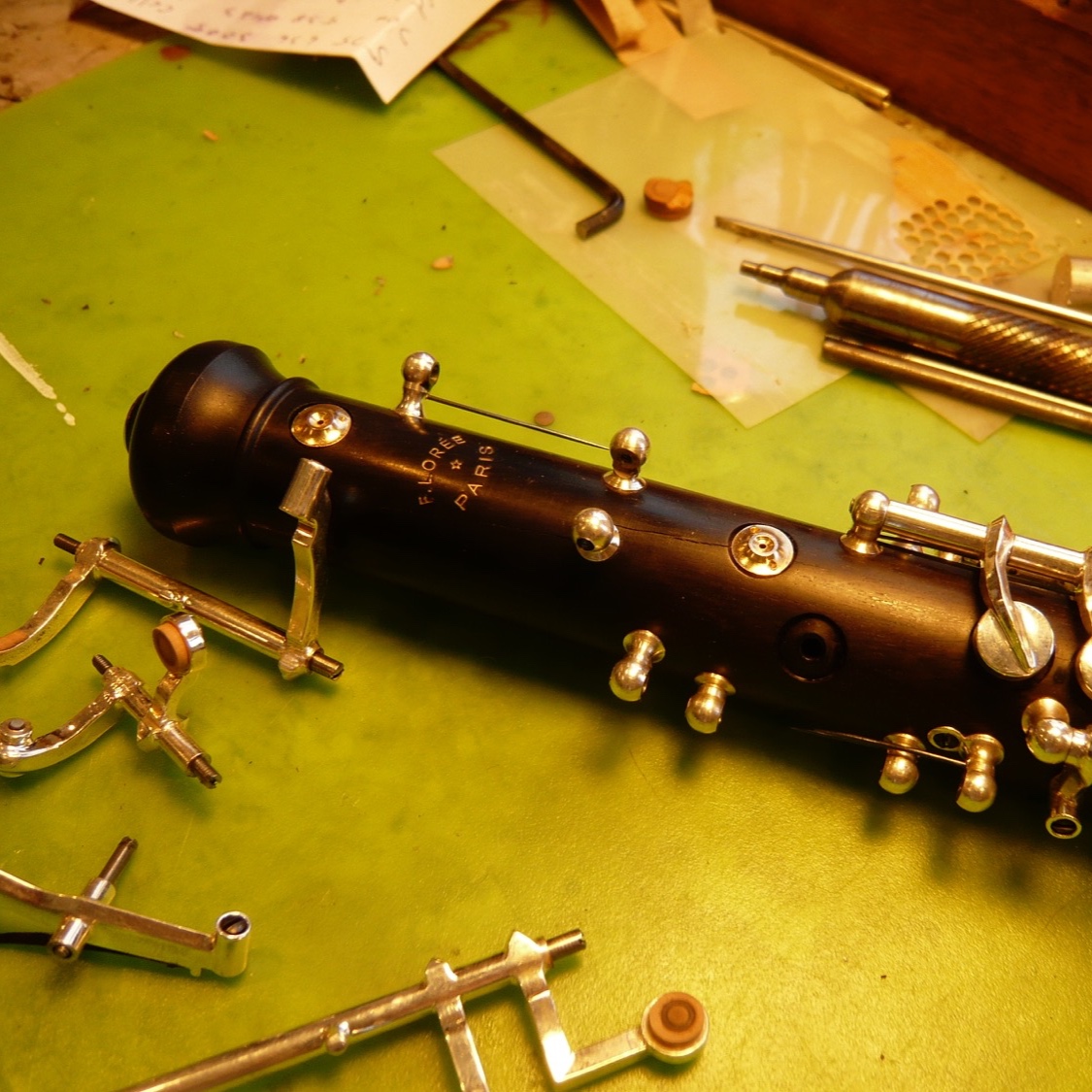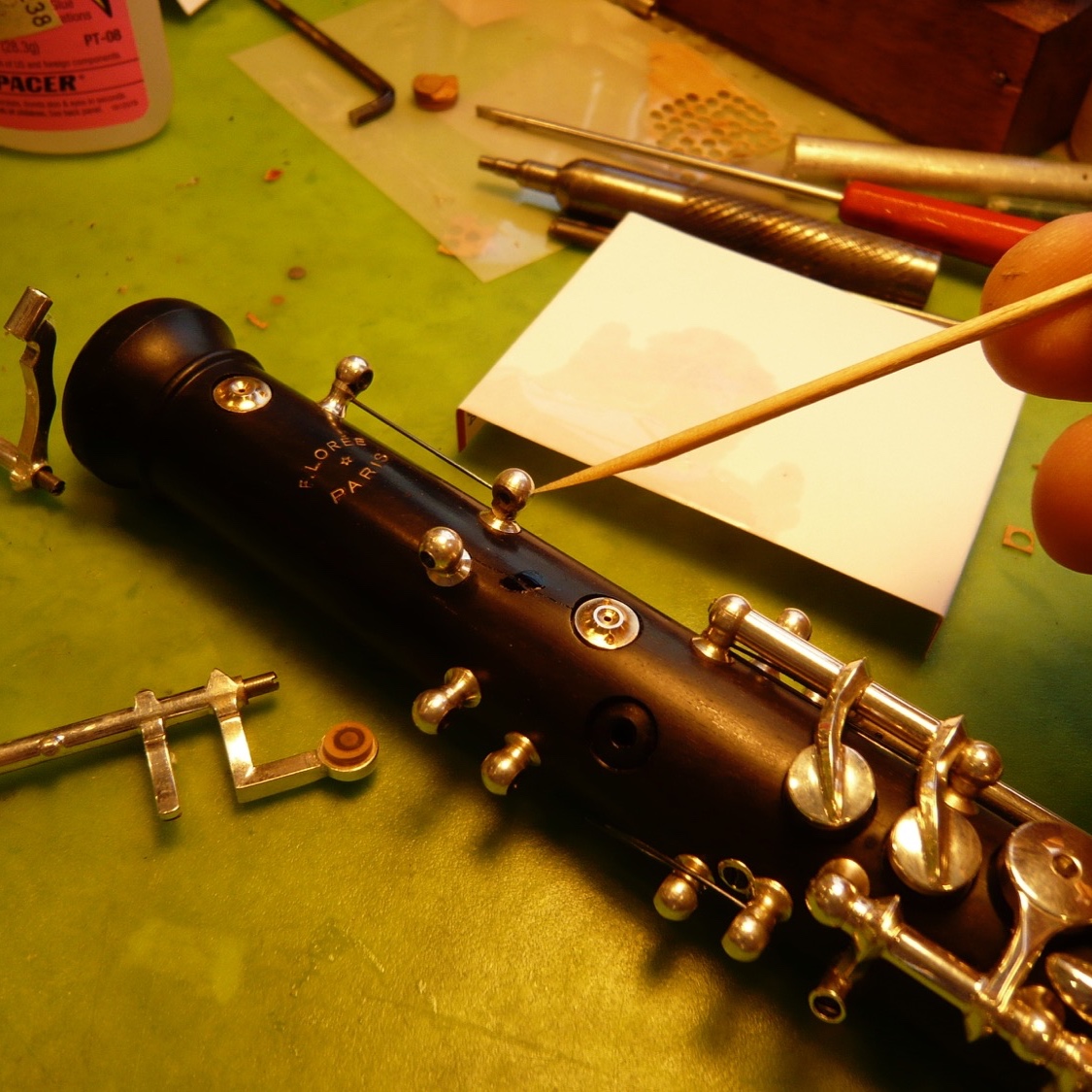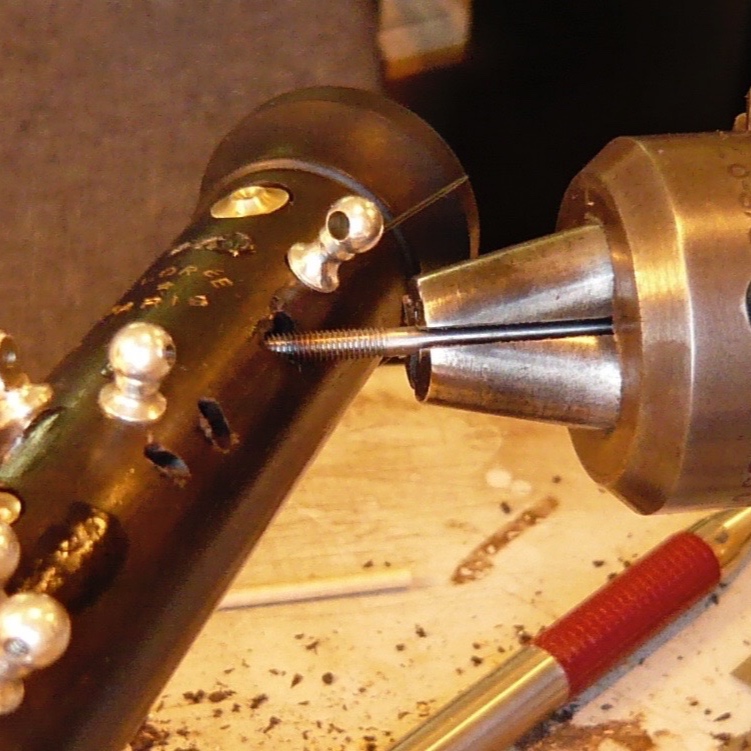Sealing a Crack
The right glue
Get the right type of instant glue for the job. You need a really thin glue, such as “ZAP” or “Hot Stuff” rather than the ordinary glues available at the grocery or hardware stores. These thin glues are available at hobby, art supply, or woodworking stores, or anywhere that sells models or remote control toys and kits.
Remove keys
Remove only enough keys so you can see entire crack and access everything to put it back together easily. Keep the rods inside the keys and lay them out in the order you took them off so they don’t get lost or confused. If you remove a pivot screw, put it back in its’ own post to keep it safe.
Use a toothpick as an applicator
Don’t apply the glue directly from the bottle. It is runny, and can easily stick pads to the oboe or keys to each other. Use a toothpick saturated with glue as an applicator. Pour a small pool of glue into a small disposable container or piece of cardboard and take drops of glue from that.
Keep away from tonehole rims
Apply the glue slightly away from the rims of the toneholes so you don’t change the way the pad seats. It will wick into the crack easily.
Make sure glue is set
Apply glue drop by drop until the crack accepts no more.
Make sure that the glue has set before replacing the keys. Leave it for a minute, and poke it with the toothpick to make sure it is completely solid before putting the keys back on.
Re-assemble
Put the keys back on in the reverse order you took them off. make sure springs are engaged as you go along.
Make an Appointment
The oboe will be safe to play, but you may wish to make an appointment to have pins or tonehole inserts installed.






